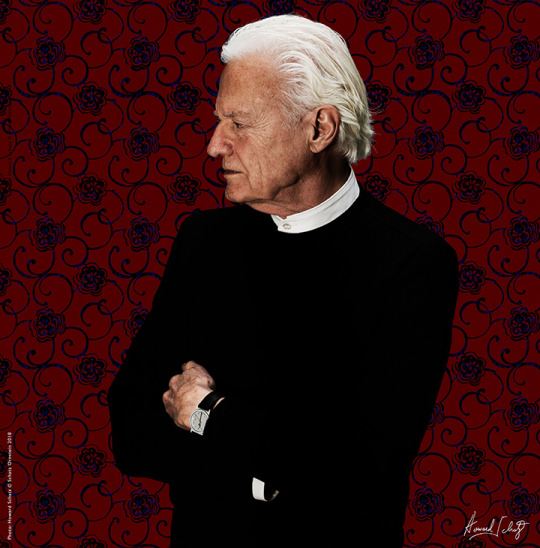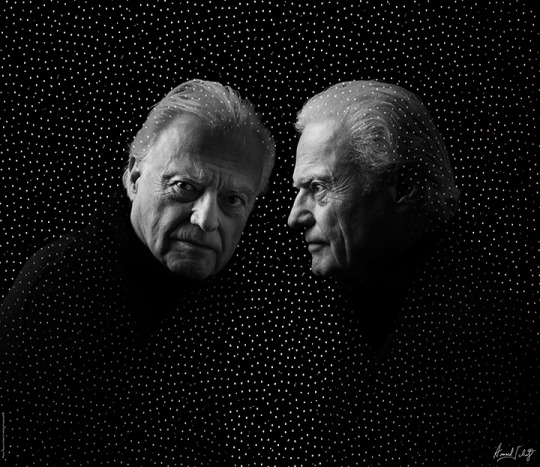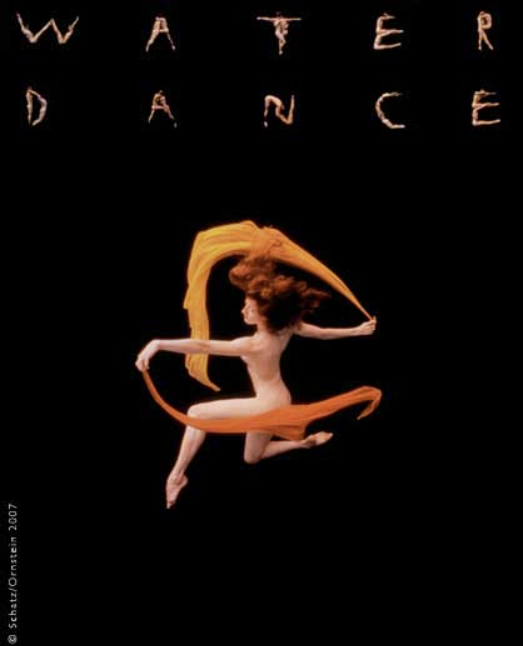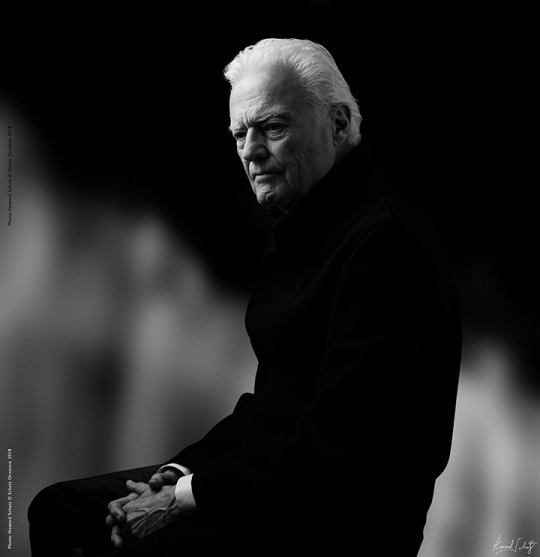
We invited B. Martin Pedersen to our studio to participate in my project “ABOVE and BEYOND.”
Pedersen, the owner, publisher and creative director of Graphis Inc., is one of the giants in the fields of graphic design and visual arts publishing. Globally respected as a graphic superstar, elected into the Art Directors Hall of Fame in 1997, Pedersen has a four decade-long career highlighted by more than 300 industry awards.
In 1986, Pedersen bought Graphis from its founder, Walter Herdeg, and today Pedersen remains the sole judge of all the work entered into the competitions which become the basis of the books published by Graphis.
What follows is the interview I did with Pedersen before the portrait session:
HS: Why did you buy Graphis, since in essence it would end your working as a designer and change your life?
MP: I came to a point where I realized I was handling from six to ten clients at a time. It wears you out. And at that time we were doing mechanical layouts [as opposed to digital]. I don’t even remember how I could manage that because it’s such a tedious process. So, I considered my future, found an investor, and bought Graphis.
Because of the vast number of submissions we receive at GRAPHIS in graphic design, illustration, photography, typography, advertising, etcetera, I’m inspired every day. Great graphic design ought to be visually pleasing, communicating a vision to the public properly. And when it’s great, it just clicks.
HS: How has design changed over the years? What have the trends been? What is the ebb and flow in relationship to our culture?
MP: There has been an evolution through the sixties, seventies, eighties and beyond. In every decade, new things pop out. Styles come and go…continuously, it never stops.
The advertising legend, Helmut Krone, once told a student among a group we were having lunch with in Manhattan that his job was to “come up with great ideas.” Simple as that. And he was right.

HS: Where do great ideas come from?
MP: Well, you’re exploring in your head continuously. I can ask you the same question. As a designer one never stops looking. And then things that you somehow put into the back of your head (and I always carry a notebook and write things down) sometimes come to life.
In the past, after a client meeting in my studio, I would check my notes, place all of the visual and verbal information on the page, and tried to solve it. I would paint with these elements on the page, eliminate things that weren’t necessary, and rearrange the images so that the painting would start to evolve. If I had placed small type, I would increase the point size to make the text readable, continuously improve the painting to make it visually arresting, and prioritize all of the elements to hopefully meet the client’s needs.
HS: Do you design now?
MP: Yes. Books. I have a directive for the books that’s very simple. I want my personal work out of it. I want the award-winning work to be the most important images on the page. That’s what is most important for each winner.
HS: Who does the judging?
MP: I do.
HS: You examine every one of those thousands of submissions?
MP: Yes, tens of thousands.
Below is some of Pedersen’s past work:

As it happens, I was one of those thousands, in 1993. I had been making underwater photographs of dancers, mostly from the San Francisco Ballet. The adversary of dance is gravity and in the water the body is buoyant—gravity is erased. A dancer can perform weightlessly, and beautifully.
After about a year’s work, I had made many images and decided to enter the work in the Graphis Photography Annual contest.

As it happens, I was one of those thousands, in 1993. I had been making underwater photographs of dancers, mostly from the San Francisco Ballet. The adversary of dance is gravity and in the water the body is buoyant—gravity is erased. A dancer can perform weightlessly, and beautifully.
After about a year’s work, I had made many images and decided to enter the work in the Graphis Photography Annual contest.
I sent in these five images as a “series” under the category “Personal Work.”
About ten days after mailing them to New York I received a phone call: “Hello, this is Martin Pedersen from Graphis. May I please speak with Howard Schatz.”
I caught my breath.
After a few seconds I managed, “Yes, this is Howard Schatz. Speaking.”
“I have these photographs that you sent in of the dancers underwater. Do you have any more of them?”
“Hundreds,” I responded.
He said, “Well, good. I am considering publishing of a book of this remarkably original work. I can fly to San Francisco next week. We can meet and I can look at the other images. Would that work for you?”

To shorten the story, to end with a beginning of sorts, Martin Pedersen published “WATERDANCE” that fall.
